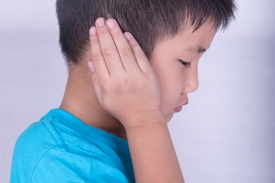 Did you know the most frequent pediatrician visits, other than for well-child care, are for ear problems? And, did you know that the most common surgery performed on children in the U.S. is for “tubes in the ears,” which refers to Tympanostomy tube (myringotomy with pressure equalization – “PE tube”) placement is the most common surgery performed on children in the United States
Did you know the most frequent pediatrician visits, other than for well-child care, are for ear problems? And, did you know that the most common surgery performed on children in the U.S. is for “tubes in the ears,” which refers to Tympanostomy tube (myringotomy with pressure equalization – “PE tube”) placement is the most common surgery performed on children in the United States
By the age of three, about one in 15 children will undergo tube placement for treatment of recurrent and/or painful ear infections, persistent middle ear fluid, and/or the resultant persistent or fluctuating hearing loss due to fluid. Young infants and children are generally more susceptible to ear infections due to their weak immune systems, frequent colds, daycare enrollment, second hand smoke, allergies and even just their anatomy.
In young children, the Eustachian tube (the tube that connect the back of the nose/throat to the middle ear) is on a more horizontal plane – as they get older, the face and head elongate and gravity sets in.
So where does the fluid come from?
The middle ear is like a little room located behind the eardrum. This room is filled with air, lined with tissue containing mucous and three middle ear bones. The Eustachian tube connects the middle ear to the back of the nose/throat area, also known as the nasopharynx. Occasionally, with swallowing, the very narrow Eustachian tube briefly opens and closes again – in adults, it is about the diameter of pencil lead and opens every second or third swallow. This keeps the air pressure in the middle ear equal to the rest of the world If the Eustachian tube doesn’t open as it should, then the tissues that line the middle ear use up the available air. That creates a vacuum or negative pressure, which will begin to draw fluids from the tissue that accumulate in the middle ear. This is the reason why your ears may pop when you have a cold, or are driving in the mountains – the Eustachian tube opens to equalize the pressure...that’s good!
To various degrees, the fluid prevents sound from efficiently passing through to the inner ear and causes what is referred to as a “conductive” hearing loss, Although it’s generally temporary, such hearing loss can impact children differently and many pediatric otolaryngologists (ENT doctors) will ask for hearing testing before/after tube placement.
A study performed in 2001 revealed that although tube placement lowers the instance of ear infections, approximately 15-26% of children will continue to experience episodes following surgery (Kay, 2001). So, despite tube placement, some children continue to experience middle ear infections, but direct route treatment is easier with ear drops and as long as the tube remains patent (open) then hearing should not be affected.
If you have concerns about your child’s ears or hearing health, contact CHSC for an evaluation.
Learn more about Cleveland Hearing & Speech Center's Early Intervention program.









